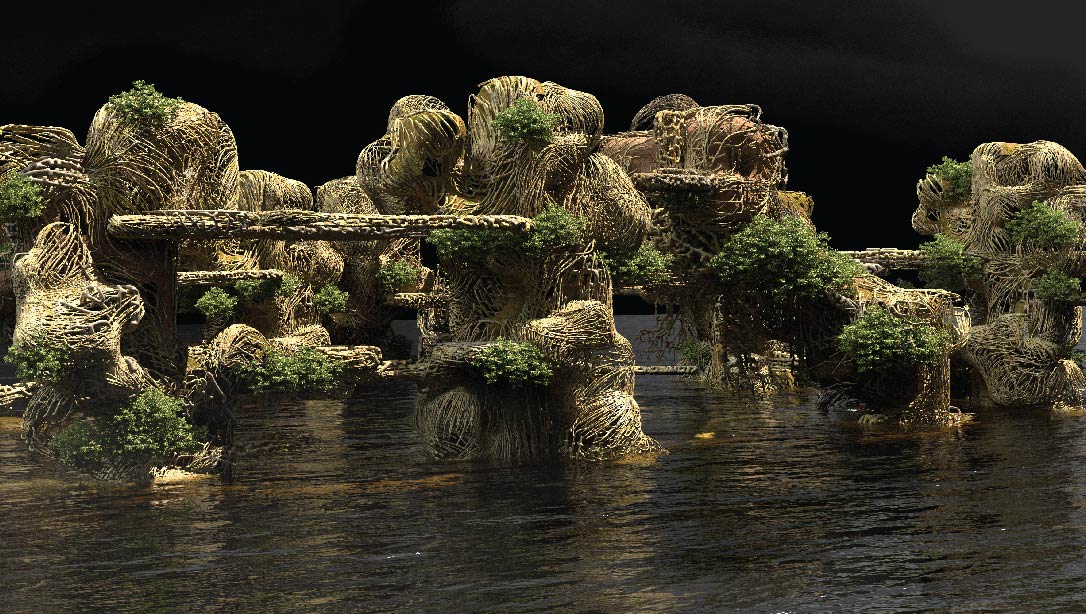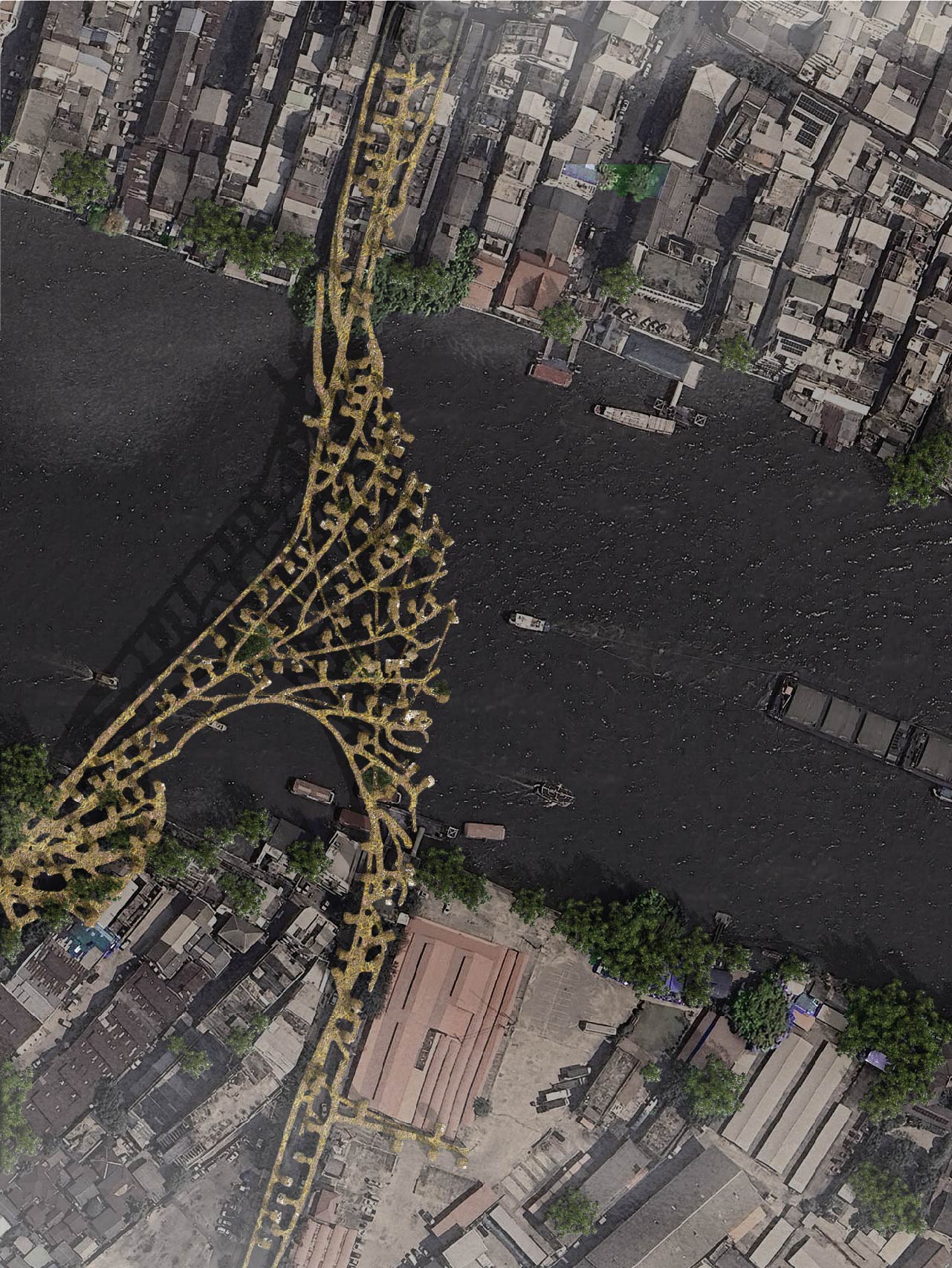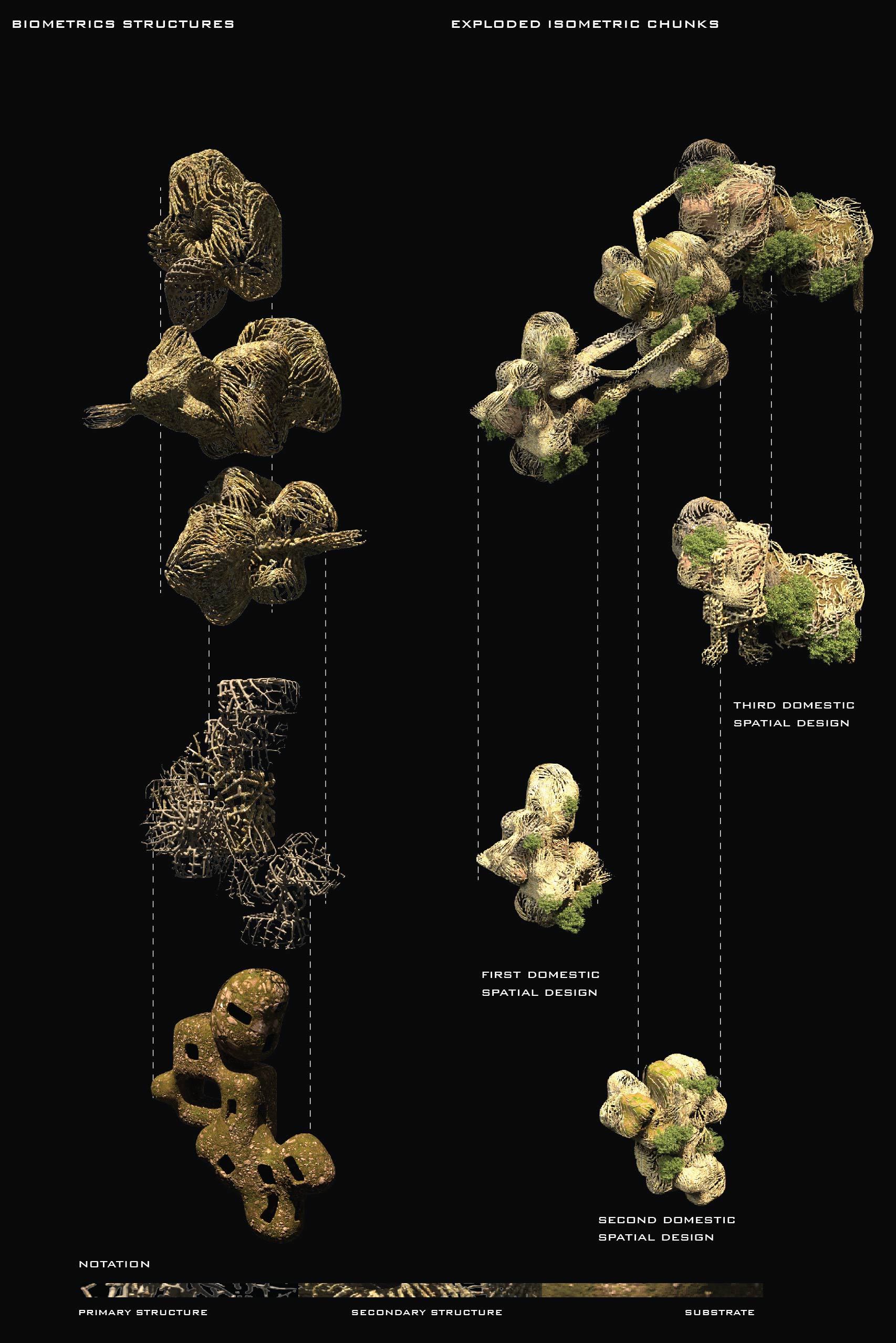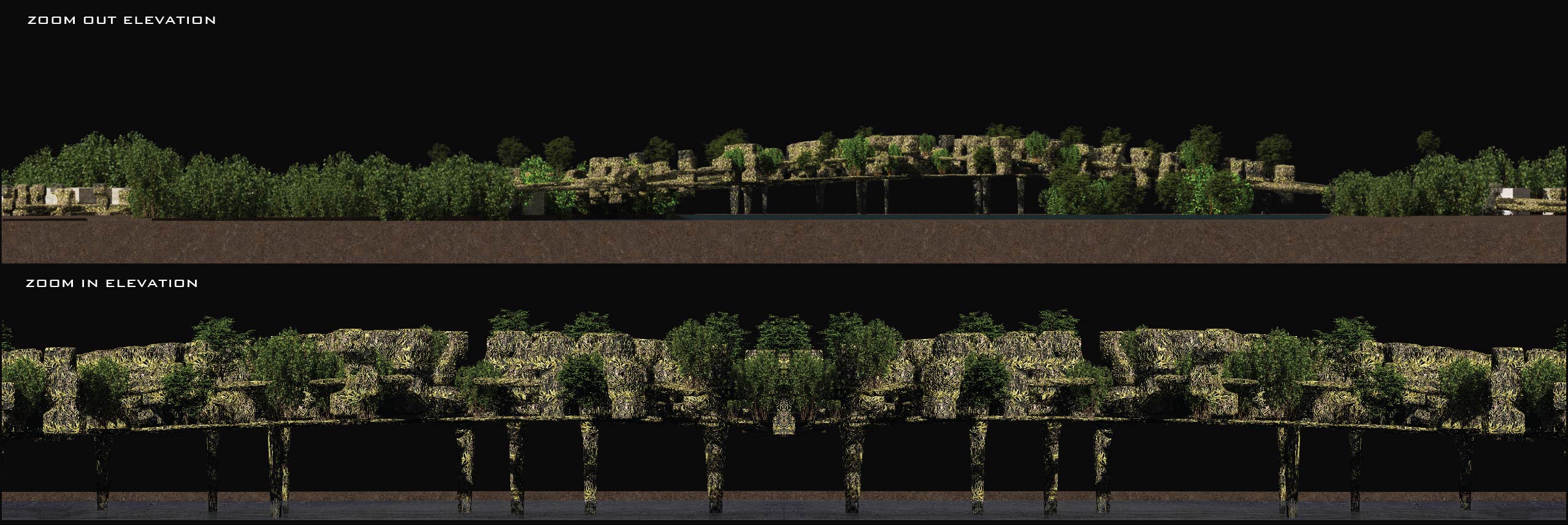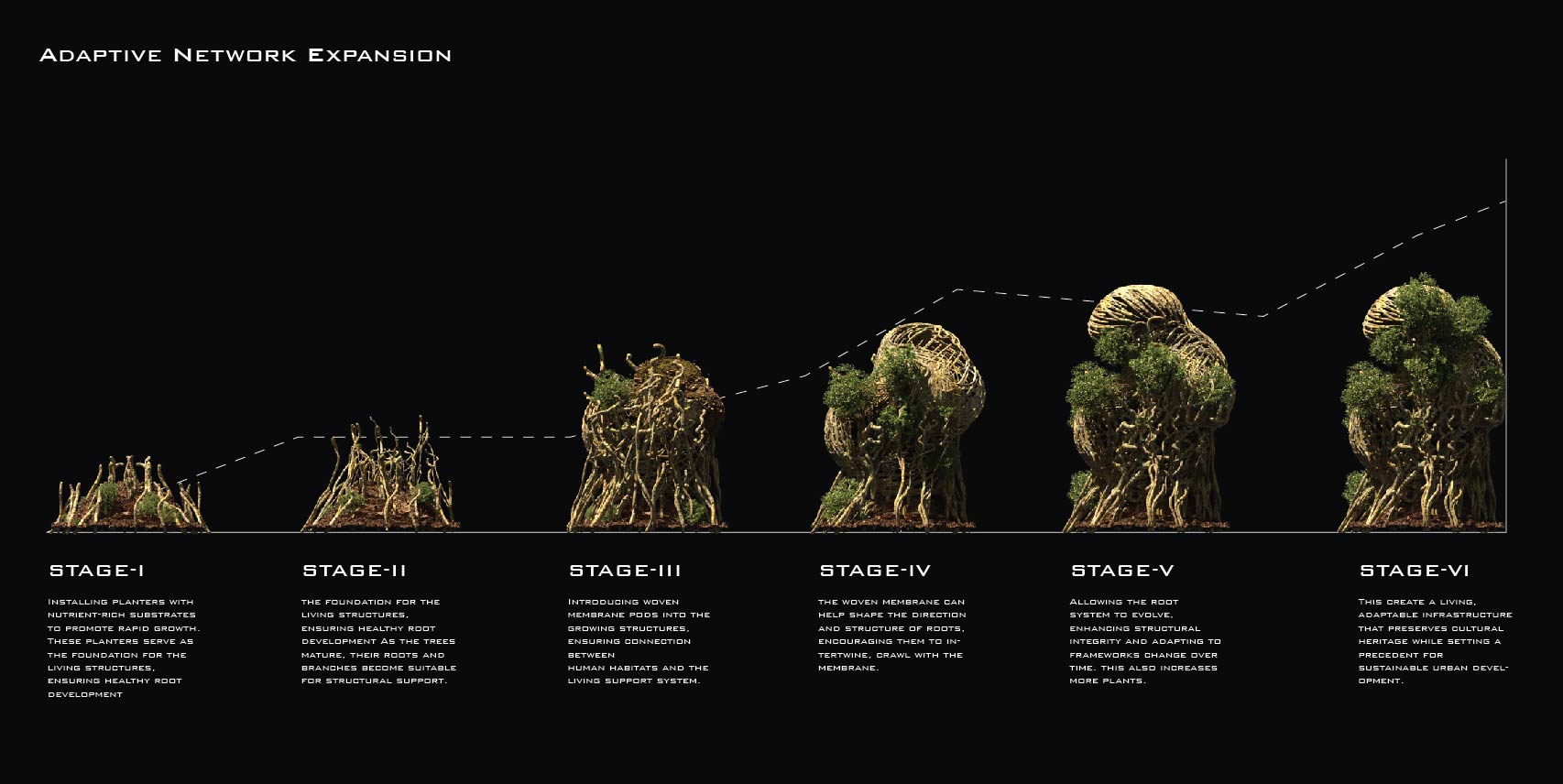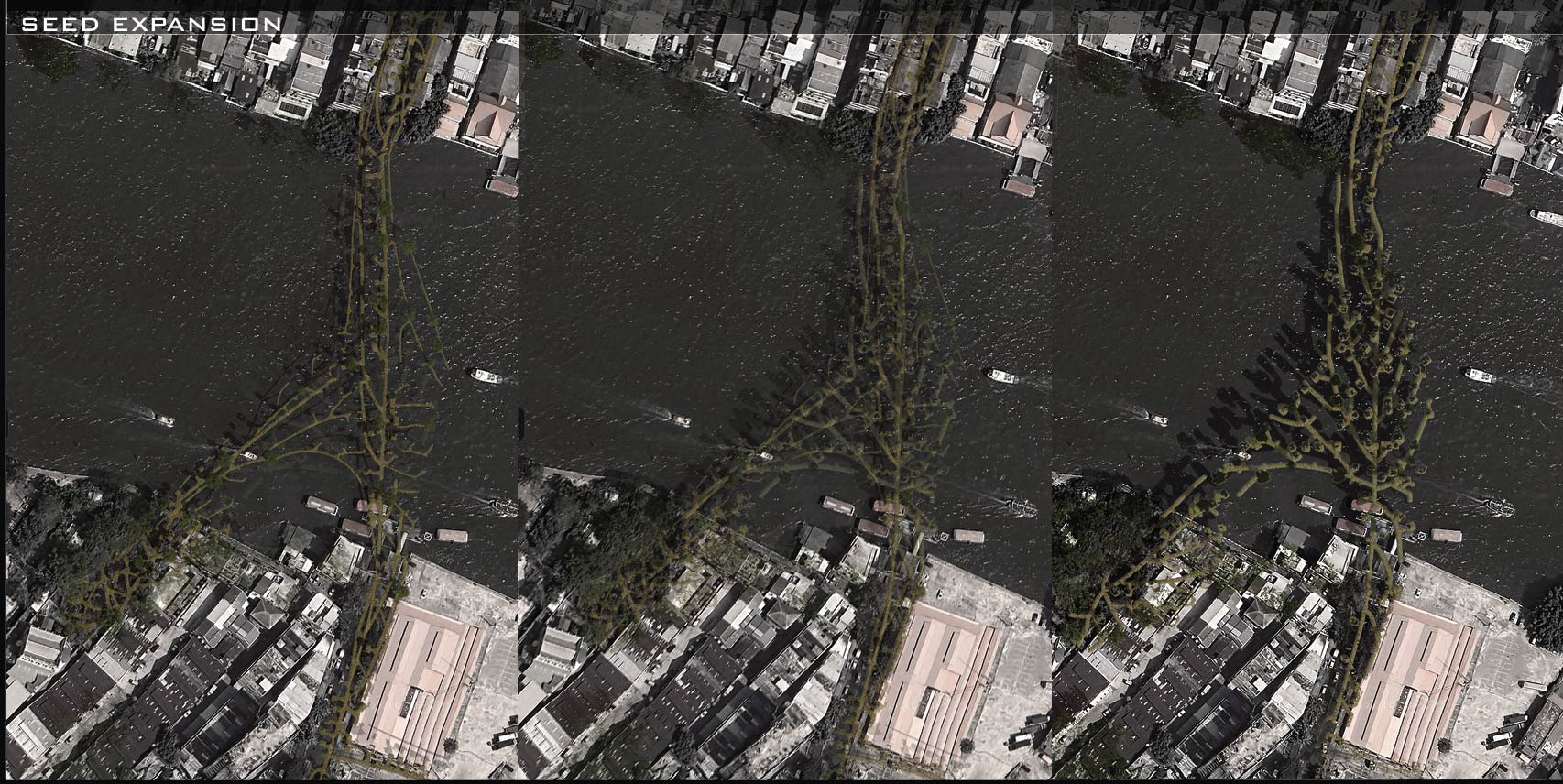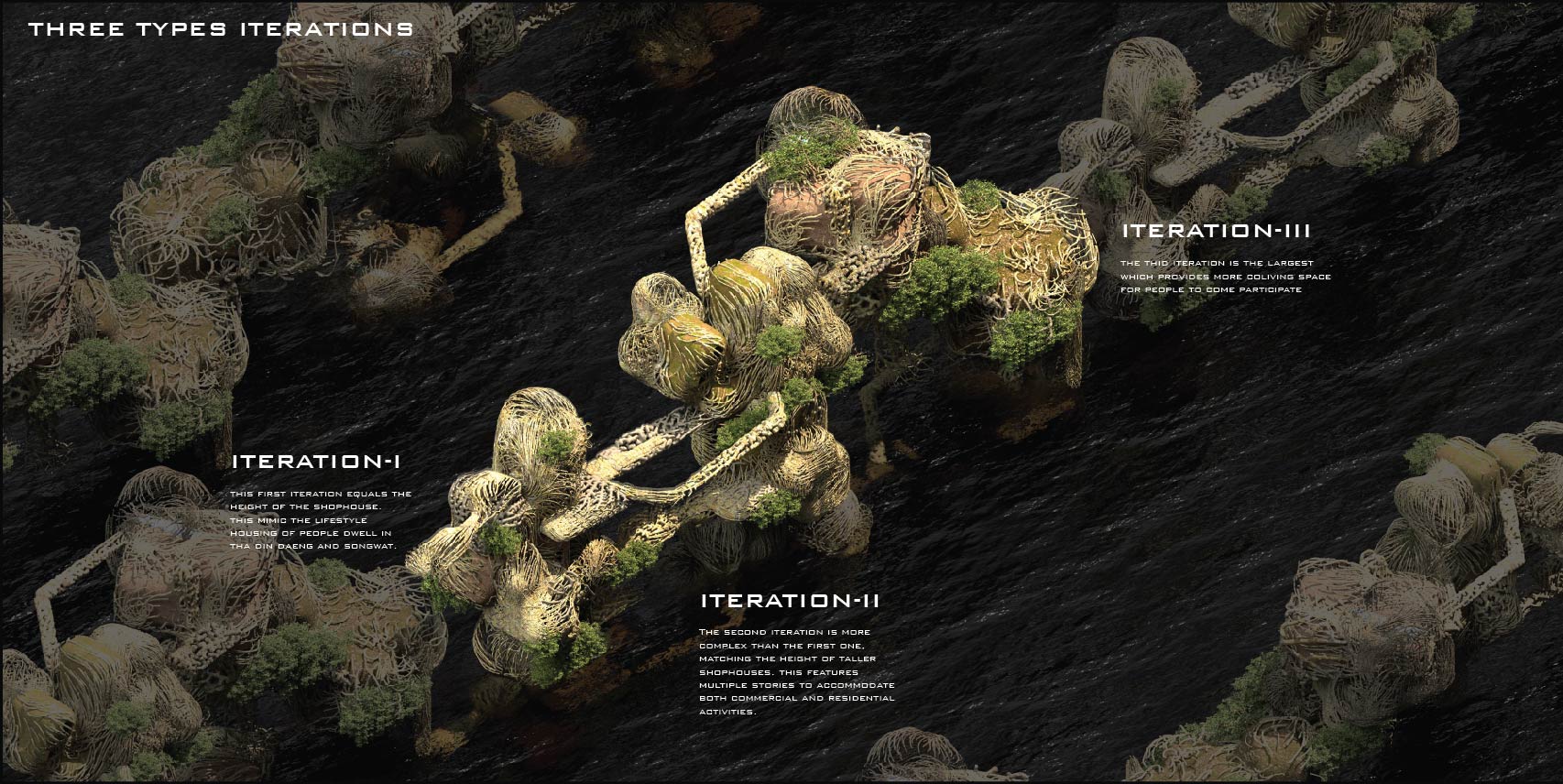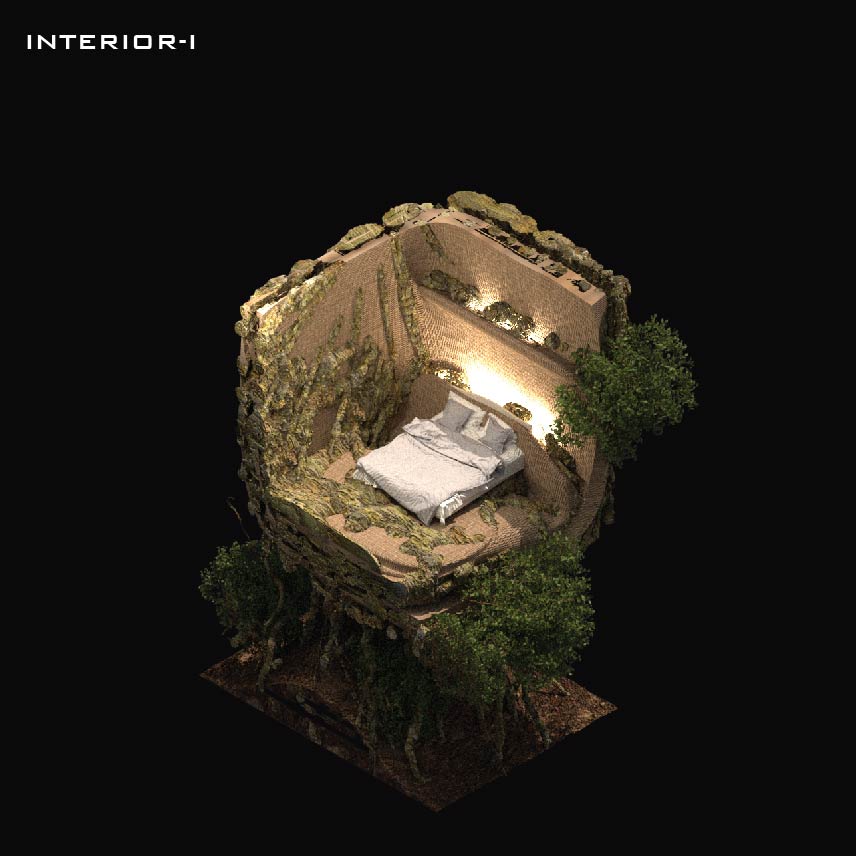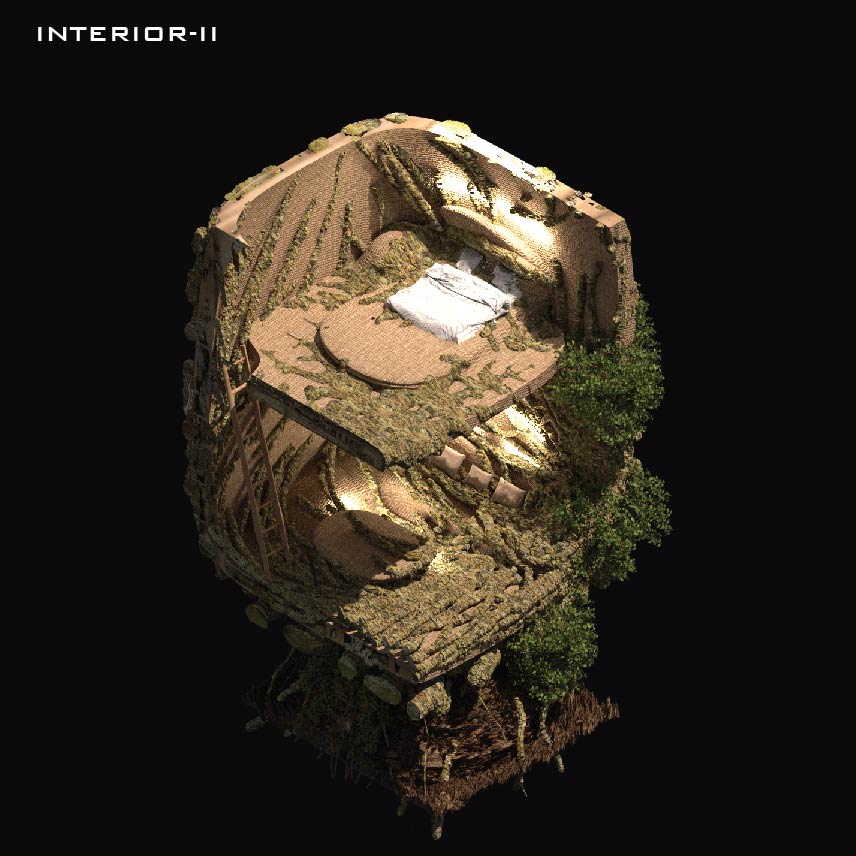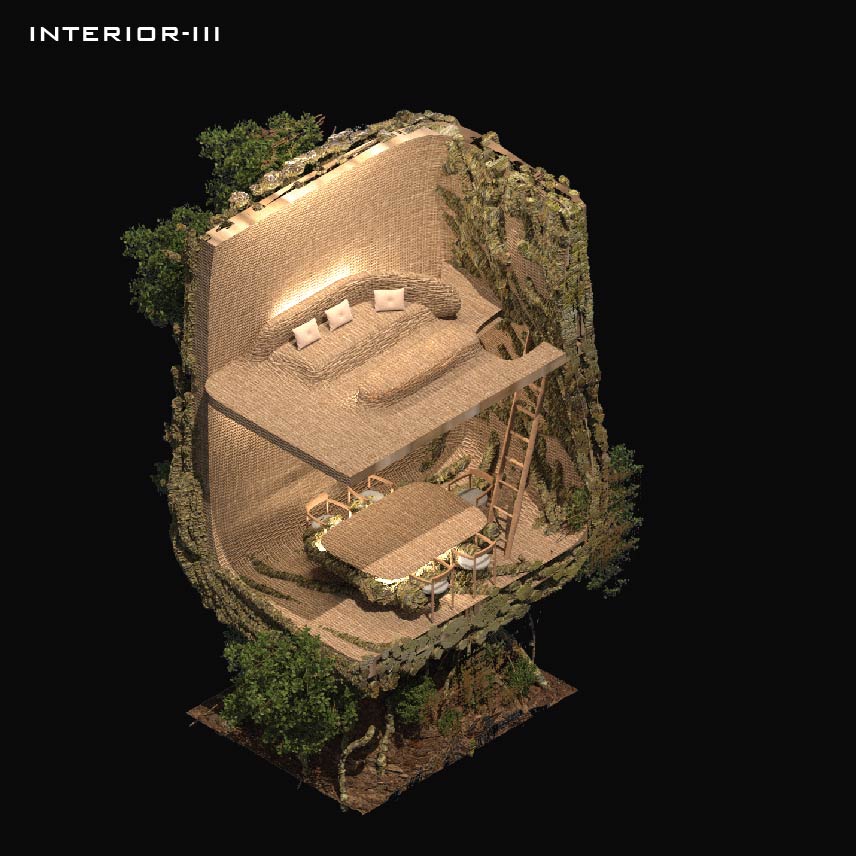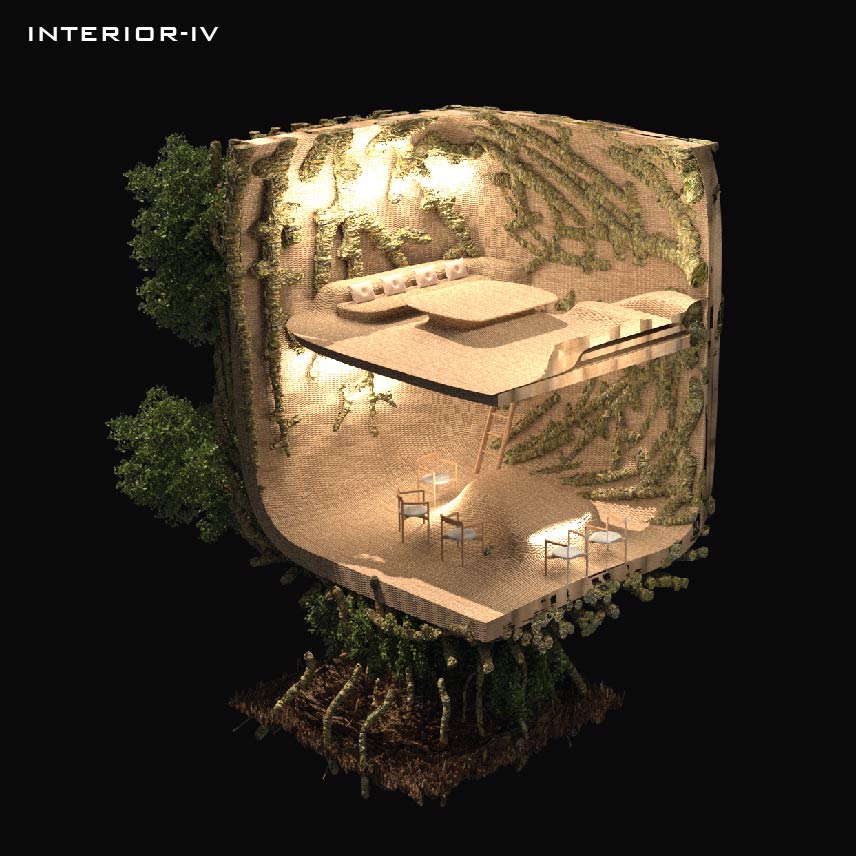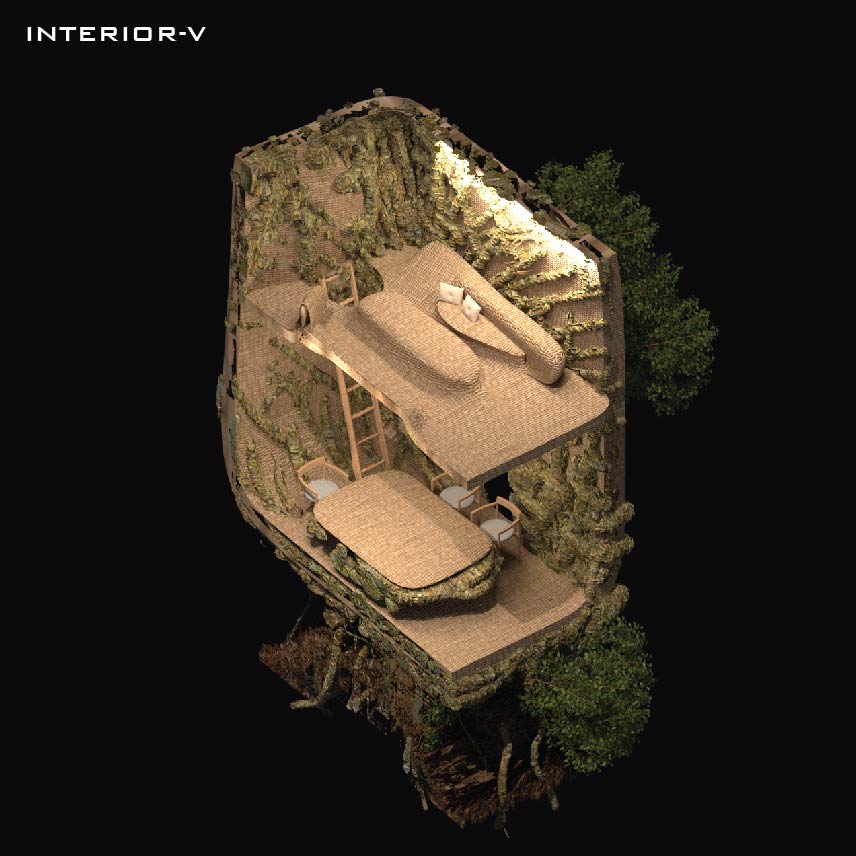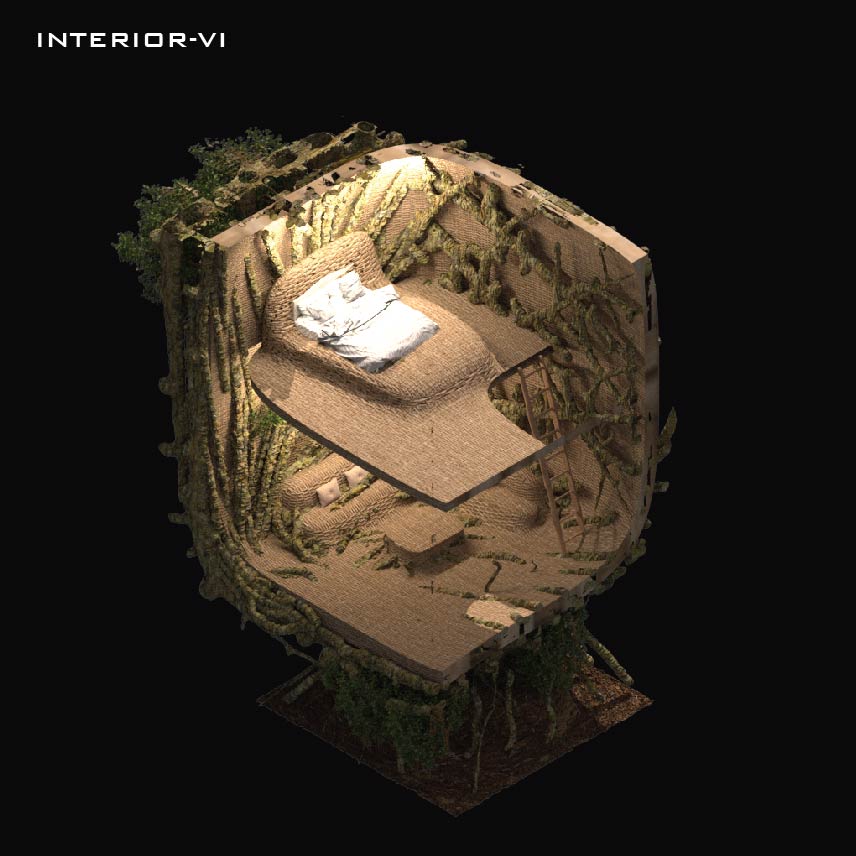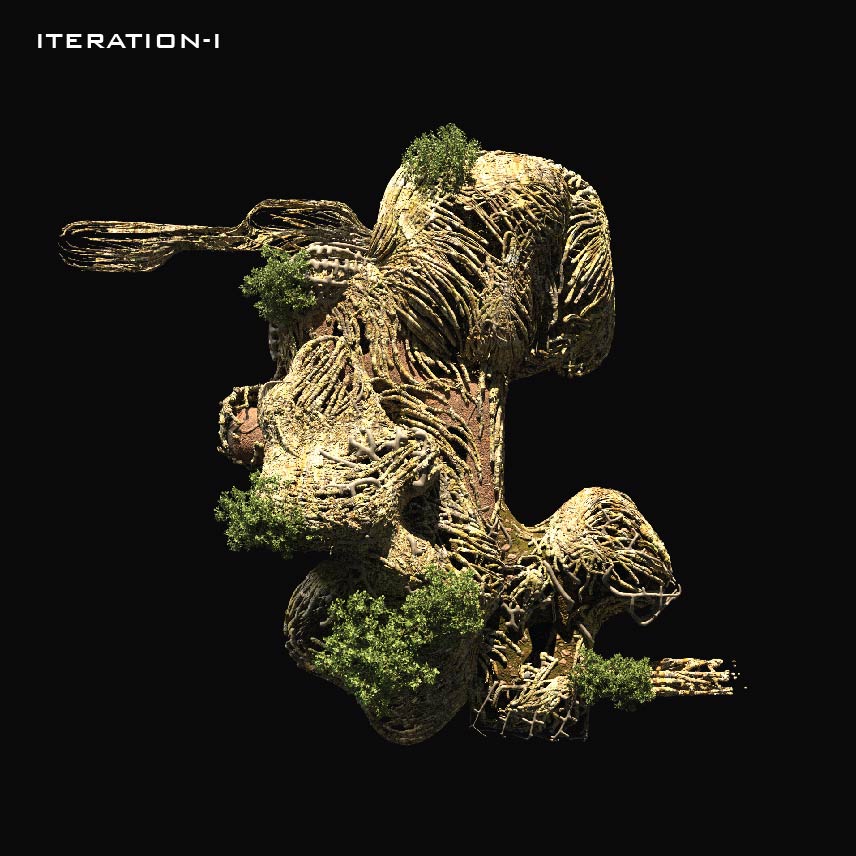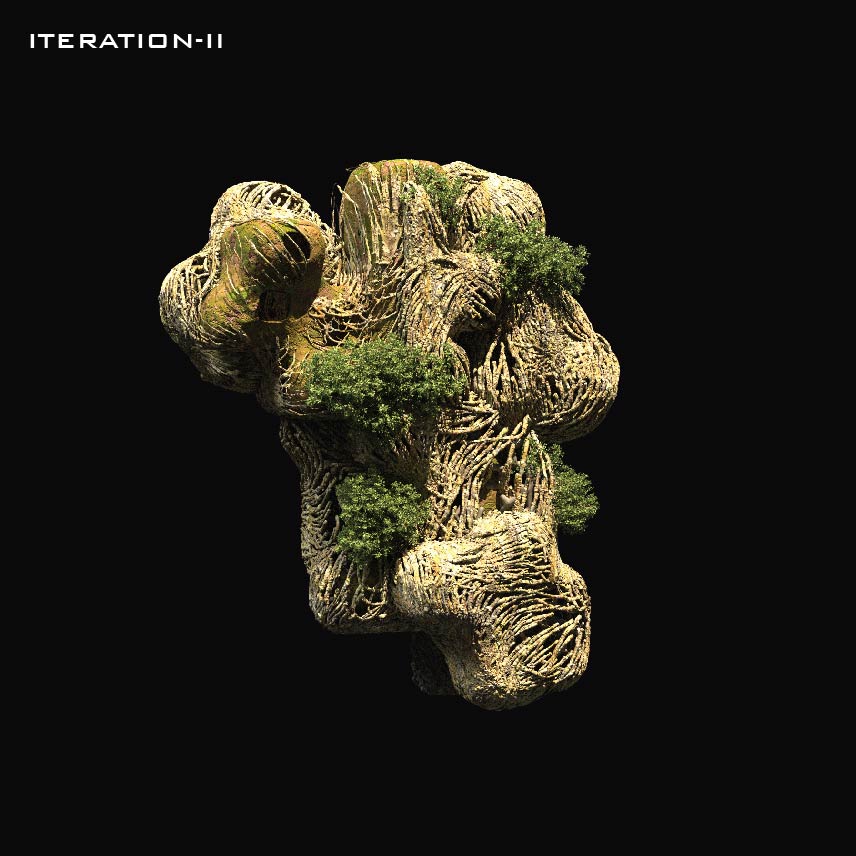The Root Bridge Project
Rhino, Grasshopper, V-Ray, Photoshop,
Illustrator, InDesign
The project explores how integrating living systems into architecture can redefine traditional boundaries between housing, infrastructure, landscape, and urbanism. Envisioned as both a transportation bridge and a residential landmass, it challenges the conventional view of architecture as static and inert, proposing instead a dynamic, adaptable rhizome system that evolves over time. Located on a future bridge site connecting the Songwat and Tha Din Daeng neighborhoods, the design offers an alternative to the disruptive nature of massive concrete infrastructure. Rather than demolishing the historic site, the living root structure functions as an urban prosthesis, mirroring the scale and typology of local shophouses. This approach enhances traditional street-business-housing relationships through a new three-dimensional ground plane. The outcome is a hybrid space, a synthetic ecology that seamlessly blends landscape, living structure, and man-made infrastructure, creating a living garden for human occupation. This design not only challenges conventional notions of housing and urbanism but also promotes environmental sustainability by utilizing living materials that contribute to air purification and biodiversity. Additionally, the adaptable nature of the structure allows it to respond to changing community needs and environmental conditions over time, ensuring its relevance and resilience in the face of urban development.
